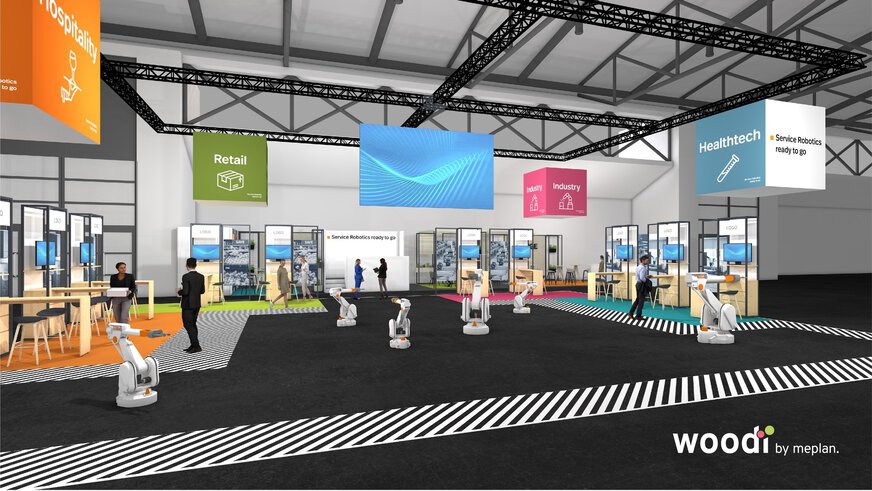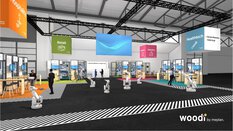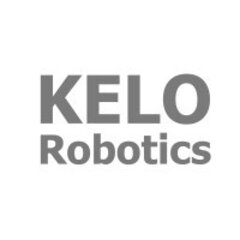Service Robotics Arena
Ready, steady, go: service robots in action
Service robots are now becoming genuine all-rounders – whether mobile or stationary, whether in the Health, Hospitality, Construction, or Industrial sector. They are generating record-breaking growth rates as their fields of application are far from exhausted. Learn how they already support us today and what future prospects they offer at the Service Robotics Arena joint pavilion featuring a large event area, numerous live highlights, and professional commentators. Are you ready for the service robot experience?
Showtime: the Service Robotics Arena
Prototypes have become marketable products; research has become a steadily growing industry. Service robots have learned to walk and are now ready for a multitude of applications—partly thanks to advancements in conventional industrial robotics such as collaborative robots, no-code programming, and sophisticated processes for sensor data evaluation. They have even started developing a genuine sense of their environment. It has never been easier to operate and program robots—even without strong technical knowledge.
What characterizes the joint pavilion? For one thing, there is a large area for numerous exhibits to move about in. Its open arena layout invites to interact with the various service robots. Also, the already impressive presentations will become even more memorable by having live commentators provide additional background information, product features, and AI insights. They will be displayed on a large screen to make the robot show both informational and entertaining.
Live Commentators
Moderator: Max Radford, Siemens AG
10:15 – 10:35, Service Robots in Healthcare and Hospitality
10:45 – 11:05, Service Robots in Industry and Construction
(25 min break)
11:30 – 11:50, Service Robots in Healthcare and Hospitality
12:00 – 12:20, Service Robots in Industry and Construction
14:00 – 14:20, Service Robots in Healthcare and Hospitality
14:30 – 14:50, Service Robots in Industry and Construction
(25 min break)
15:15 – 15:35, Service Robots in Healthcare and Hospitality
15:45 – 16:05, Service Robots in Industry and Construction
14:00 – 14:20, Service Robots in Healthcare and Hospitality
14:30 – 14:50, Service Robots in Industry and Construction
(25 min break)
15:15 – 15:35, Service Robots in Healthcare and Hospitality
15:45 – 16:05, Service Robots in Industry and Construction
10:15 – 10:35, Service Robots in Healthcare and Hospitality
10:45 – 11:05, Service Robots in Industry and Construction
(25 min break)
11:30 – 11:50, Service Robots in Healthcare and Hospitality
12:00 – 12:20, Service Robots in Industry and Construction
Practical relevance included
The Service Robotics Arena presents different fields of application separately. The Healthtech, Industry, Hospitality, and Construction application areas have different color themes to improve orientation. Large graphics transform the individual segments into facilities such as laboratories, production halls, hotel lobbies, or construction sites. This is an opportunity for you to experience and test service robots in their natural work environment right here on site.
Nice to meet you: robots on site
An exhibit representing the Health sector: uMobileLAB by United Robotics Group Health & Food features a robotic arm and a mobile platform for handling samples in lab environments, and the DENSO Cobotta Pro robot by AAtec helps lab teams process bacterial colonies. In related applications, the sophisticated machine vision methods of Robovision BV help detect and remove specific colonies in Petri dishes. The Workerbot9 Care-home by pi4_robotics has been specifically designed for inpatient care facilities and hospitals. It performs tasks such as serving drinks and reminding residents or patients of important appointments.
Mobile transport robots by PAL Robotics provide intralogistics support in the industrial sector. The TIAGo Pro robotic assistant is capable of independently recognizing objects and gripping them with its arms. The humanoid Kangaroo robot can move around on its legs and is even capable of navigating uneven floors. Robotnik is another company offering various transport robots and mobile manipulators performing security and logistics tasks both within buildings and outdoors.
Mobile robots by Kelo Robotics transport pallets and boxes, but they can also be qualified to perform other tasks. That is because—just like mobile manipulators—they are modular systems supporting individual configurations for specific fields of use. Floor cleaning is another important field of application. This is where the industrious helpers by Lionsbot come in as they autonomously perform their work in various indoor areas where they can both sweep and mop floors. Robots from RoboPlanet are also on the move in the hospitality sector, taking on delivery tasks in restaurants, for example.
As proven by the Italian Institute of Technology IIT, robots can also lend a strong hand in construction. The institute presents a robot for lifting and transporting heavy objects, drilling holes, as well as grinding and plastering walls prior to further processing. Grinding walls, ceilings, and floors is also what Conbotics robots are deployed for. They can also help paint and coat all kinds of surfaces.
MYBOTSHOP makes young and old smile with its humanoid and quadruped robot, while the fully autonomous RoboBar invites you to linger. Here, various drinks are mixed by a robot bartender. The robot technology is designed to entertain guests as well as ensure a consistent quality of preparation.














Participants 2025
Review of the 2023 Service Robotics joint pavilion
45 % of all visitors at automatica 2023 saw the Professional Service Robotics exhibition area. That made the joint pavilion one of the most frequented highlights – and it received great feedback: 94 % gave it an excellent to good rating. If you want to immerse yourself in this topic once again: Roll it!
Our cooperation partners
Date | Tuesday, June 24 until Thursday June 27, 2025 |
Time | Live moderation: |
Place | Hall A4 Stand 210 |
Language | English |














